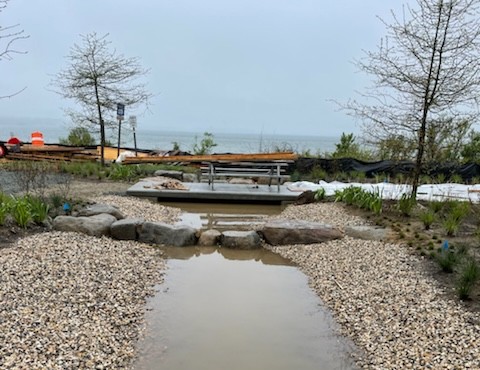
The Town of East Hampton recently reviewed its Community Preservation Fund (CPF) Water Quality Program and noticed the program has made significant strides in 2024, focusing on wastewater treatment, septic upgrades, and stormwater management to enhance local water quality. In addition, the town is looking to achieve its goals for this year, which include improving water quality, increasing membership in the Septic Incentive Program and more educational outreach.
In 2024, the program received 15 applications across two rounds and awarded $1,368,173 to fund seven projects, including four in the first round and three in the second. Since its inception, the program has funded 50 projects, totaling $9,379,319, which includes upgrades to commercial and not-for-profit septic systems, permeable reactive barriers, eelgrass restoration, and stormwater abatement projects, among others.
The Septic Incentive Program saw a notable increase in activity in 2024 with 179 approved septic eligibility applications and 165 I/A (Innovative/Alternative) septic systems installed, replacing aging cesspools. To date, 780 I/A septic systems have been installed through the program, with a total of $12.3 million in CPF Water Quality funding used for septic replacements since 2017.
Significant progress was made in municipal septic system installations, stormwater abatement, and restoration projects, according to the town. In 2024, five additional conventional systems were upgraded to I/A systems with a total of 13 town-owned buildings now converted to advanced treatment. Work continued on multiple stormwater management designs and wastewater treatment upgrades, including the completion of the South Lake Montauk Park restoration.
Looking ahead to 2025, the town aims to increase outreach to attract more applications, particularly from high-flow establishments in priority areas. Efforts will focus on encouraging waterfront commercial property owners to improve wastewater treatment.
The Septic Incentive Program will expand efforts to boost participation and look to achieve its goal of increasing installations by 20%. A new staff member will support outreach activities, including tabling events and the 2025 ECO Fair.
This year, the town said, it plans to continue leading by example and building on the successes of 2024 by completing an update to the Water Quality Improvement Plan based on the recently approved amendment to the NYS CPF law, continue the installation of I/A septic systems at town-owned properties, and initiate stormwater abatement projects at key locations, such as the 27 Rest Stop and Cove Hollow Constructed Wetland.
In addition to program expansions, the town aims to enhance public education on environmental issues. This may include a water quality forum event aimed at educating boards, employees, and interested parties on new technologies and techniques for water quality improvement and restoration.
“East Hampton has always been a community that cherishes its natural beauty and understands the profound responsibility we have to protect it,” said Town Supervisor Kathee Burke Gonzalez. “These efforts are a reflection of the deep care and commitment of our residents — working together to safeguard the waters that sustain what makes our town special. I’m incredibly proud of what we’ve achieved, and I’m filled with hope and determination as we continue to make progress in 2025.”
“Maintaining and improving water quality is not just a priority—it’s a necessity,” said Councilmember David Lys. “By continuing to invest in innovative systems like I/A septic upgrades and stormwater abatement, we are ensuring that future generations of East Hampton residents can enjoy the pristine waters that make this town so special.”
“Through these projects, we are addressing critical environmental challenges with practical solutions,” said Principal Environmental Analyst Mellissa McCarron. “Our team’s work with both residents and businesses reflects a collaborative effort to improve water quality while making lasting contributions to the sustainability of our community.”

